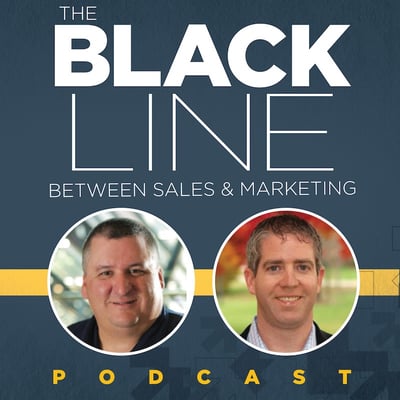There’s only one thing on everyone’s mind this week...the Bernie Sanders meme. If we recorded this episode last week, that might have been the big news. On this episode of The Black Line Podcast, Mike and Doug dive into GameStop’s stock and how to deal with prospects doing dark.

Audio:
Show Notes

Editor's Note: If you haven't already, leave the podcast a review either on Apple Podcasts or Spotify.
BIG NEWS
Everyone for the past few days has been talking about GameStop - it’s pretty wild. GameStop has kind of been decimated. Then this week they have had this pop of a valuation increase from a Reddit forum. In over a few weeks their stock rose from $5 to over $300. This whole thing started with Hertz when they went into bankruptcy and then the subreddit r/WallStreetBets realized there were a lot of shorts on it and they went against the hedge funds. Then they did the same thing with AMC and now with GameStop (and more since then).
GameStop did add the previous CEO of Chewy which caused an initial pop in the stock price on the excitement and promise that they’d be more successful. Once the stock went up and really changed, fundamentally, hedge funds started shorting the stocks. If you short a stock, you make money when the stock goes down. Shorting a stock is a dangerous thing to do because the loss can be infinite.
If you short a stock and it goes up in price, then you’ll get what is called a margin call. You’ll be forced to buy the stock back to cover the loss. Doug goes on to mention that he has an issue with how people are discussing this because a lot of people are calling buying stock as investing and shorting or selling as betting. In reality they’re technically both bets. There’s a difference when you say you’re investing in something versus betting on something.
With GameStop there was a large volume of thinly traded shares. You have the same shares traded over and over again. This is very reminiscent of 1999/2000. The only difference with today is that we now have this social media presence that’s turning it into a frenzy and amplifying the news.
Mike asks the question on whether it is possible that you can go look at how many short positions there are with a specific stock and socially amplify it over and over again. The answer is yes but the danger of doing so is two to three fold. It’s a supply/demand game. The people are having a lot of fun beating up the hedge funds. And while what’s going on might not be illegal, it is dangerous because what stops a group of people from starting another forum to do the same thing over and over again?
The biggest lesson out of this is why do we let people short stocks? One place where people are getting frustrated is that those who are big are getting bigger, faster and at the expense of everyone else.
You have to play your game. The wins are getting more variant and harder. On top of that, this is having a huge impact on consumer behavior - something we don’t address or talk about often.
Today, if we try something and don’t have a quick rush and don’t win, we think whatever we did didn’t work. We’re training our brains to think that if we don’t get the quick win that we have to move on. It’s happening in businesses and in our personal lives and it’s exhausting for you and the people around you. In reality you have the key elements of what your roadmap is and where you are making progress. You don’t have to do everything that works, you really only have to do one thing that works. We’re at a paradigm shift and you have to be really clear on the path you’re going to take to succeed moving forward.
Question of the Episode:
The question of this episode is: When is it time to call it quits on contacting a prospect who never responds to emails, returns phone calls or even picks up the phone? Is there a proper way to let them go?
Mike starts off by saying that you have to keep in mind that a prospect may show interest in a product that they won’t buy for a few years. It all depends on where the prospects are coming from and where they are in the journey. One thing you can do is change the frequency of your messages and never let them go. But because we have the quick win mindset, we think that if we don’t get this win now it doesn’t matter and we have to move on.
If someone has talked to you a couple of times and then they go dark, what do you do there?
Mike mentions you could change the subject line and ask if you lost them. He attempted this previously and got a couple of responses from those who just weren’t ready to buy yet. But how do you know when the right time do that is? It depends on the process and what you’re doing. There’s no real formula for when the “right” time is.
Doug mentions you’ll know when the magic 8 ball tells you it’s time, but in all seriousness it is contextual. Doug is a big fan of campaign intervals. When working with clients he will run an outreach program for 90 days, and if they get nothing from a prospect, they recycle them later during the play.
Salespeople do make the mistake of pursuing too long. There are so many people you could be talking to, why obsess about one person.
One piece of advice Doug gives is - DO NOT start your email with “just checking in” or “I wanted to put this at the top of the list.” Don’t tell the prospect that they’ve already ignored your email. The worst thing on a phone call is for you to ask them about the email because that’s not what you’re there to talk about, and doing so will change the focus.
Instead, when you’re writing your email, write out the “just checking in” section and when you’re done with the rest of the email, go back and delete that sentence or paragraph. It will feel weird to come in cold, but will work so much better.
Takeaways:
Mike - It's better to be lucky than good.
Doug - It's better to be good than lucky.

 Doug Davidoff
Doug Davidoff